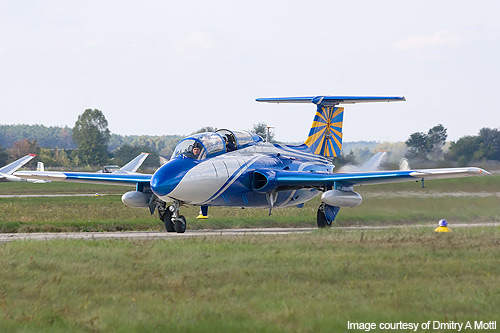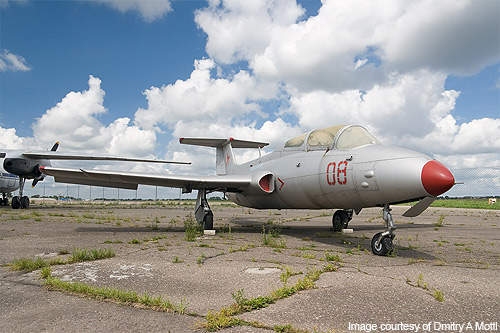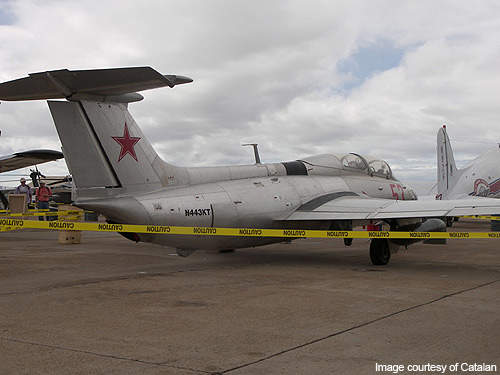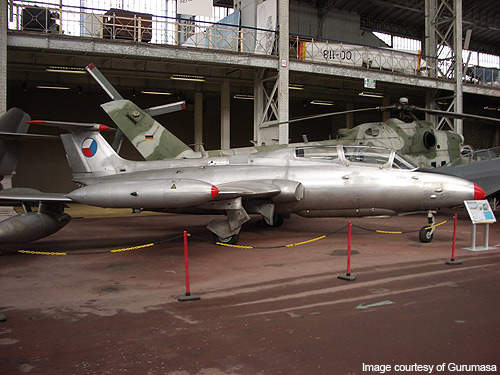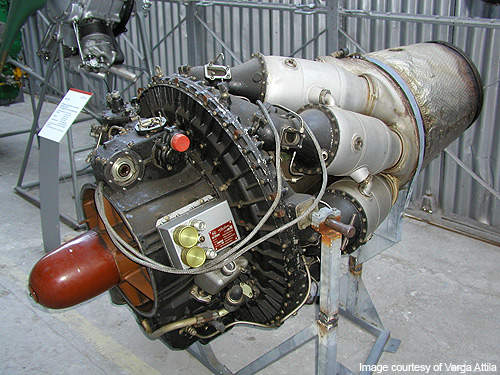The L-29 Delfin is a single-engine military trainer aircraft designed and built by Aero Vodochody for the Czechoslovakian Air Force (CAF) and Soviet Air Force (SAF).
Its Nato reporting name is Maya. It is the first indigenous jet aircraft built in Czechoslovakia with turbojet engine design.
L-29 variants
The L-29 has two variants: L-29 Akrobat and L-29R.
The L-29 Akrobat is an advanced version of the L-29. It is a single-seater aerobatic model principally deployed for training, recreation and entertainment.
The L-29R is a two-seater modern reconnaissance model fitted with nose mounted cameras and underwing stores. Its development was finalised in 1965.
International orders and deliveries
A total of 3,665 L-29s were built, of which 2,000 were delivered to SAF and 400 to CAF. The remaining models were supplied to Bulgaria, East Germany, Hungary and Romania.
Customer orders of L-29 included: Azerbaijan (18), Bulgaria (40), Czech Republic (24), Ghana (8), Mali (6), Slovak Republic (15), and Syria (40).
Design of the L-29
K Tomas and Z Rublic started the L-29 design in early 1950s. The L-29 was designed to carry out pilot training and light attack missions, even in the worst climatic conditions. The aircraft can operate from sand airfields, grass airstrips and unprepared runways. Its airframe is constructed of anodised aluminium to avoid corrosion.
The aircraft was designed to incorporate two fuel tanks of capacities 690l and 360l under the fuselage section. Two additional fuel tanks having capacity of 150l each were also installed under the wingtips.
Development
The development of L-29 emerged in the 1950s with the demand of Soviet Air Force to supplant its fleet of piston engined trainers with modern jet trainer aircraft. Aero Vodochody built the first prototype, the XL-29 which was powered by Bristol Siddeley Viper engine and completed its maiden flight in April 1959. The second prototype powered by Motorlet M701 engine took for its first flight in July 1960.
Testing of pre-production versions and obtaining quantity production approval were completed in 1961. Production was rolled out in April 1963 and ceased in 1974.
Features
The L-29 features a robust semi-monocoque airframe. It is fitted with human flight controls, radio equipment, flaps, an aileron control system, rudder, elevators, airbrakes and T-shaped empennage.
Cockpit
The pressurised cockpit of the L-29 features two ejection seats in a tandem configuration with rear seat slightly elevated by 0.15m. It can conciliate two crew members including student pilot and flight instructor. The aircraft is fitted with a two piece glass canopy for rendering clear visibility. The front piece canopy opens to the starboard side and the rearward canopy can be lifted backward.
Armaments
The L-29 comprises two underwing hardpoints to carry small size weaponry. It is equipped with an ASP-3MN/U weapons sight, camera gun, either two 7.62mm machine guns or eight air to surface missiles and unguided bombs weighing up to 200kg.
Engines
The L-29 is powered by a single M-701C 500 turbojet engine designed and built by Motorlet (now known as Walter Aircraft Engines).
The engine generates 8.7kN of thrust and features a single stage centrifugal compressor, seven straight flow combustion chambers and a single stage axial turbine.
The length and diameter of the engine are 2.06m and 0.89m respectively. The dry weight is 330kg.
Landing gear
The tricycle type retractable landing gear of the L-29 comprises anti-skid units, Barum low pressure tires, pneumatic brakes and oleo-pneumatic shock-absorbers. The steerable nose wheel retracts into the fuselage, while the main gear wheels pull back into the wing roots.
Performance
The L-29 can climb at the rate of 14m/s. The maximum and cruise speeds of the aircraft are 820km/h and 655km/h respectively. The stall speed is 130km/h. The range and service ceiling are 894km and 11,000m respectively. The maximum endurance of the aircraft is two hours and 30 minutes.
The take-off and landing run are 550m and 440m respectively.
The Global Military Aircraft Market 2011-2021
This project forms part of our recent analysis and forecasts of the global military aircraft market available from our business information platform Strategic Defence Intelligence. For more information click here or contact us: EMEA: +44 20 7936 6783; Americas: +1 415 439 4914; Asia Pacific: +61 2 9947 9709 or via email.

